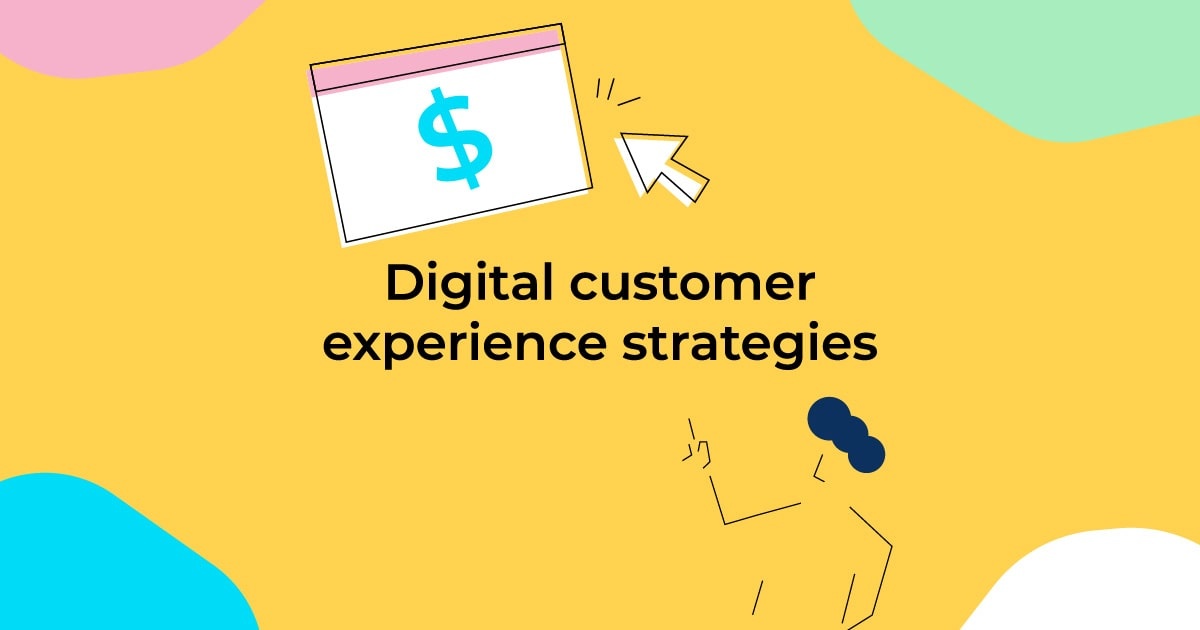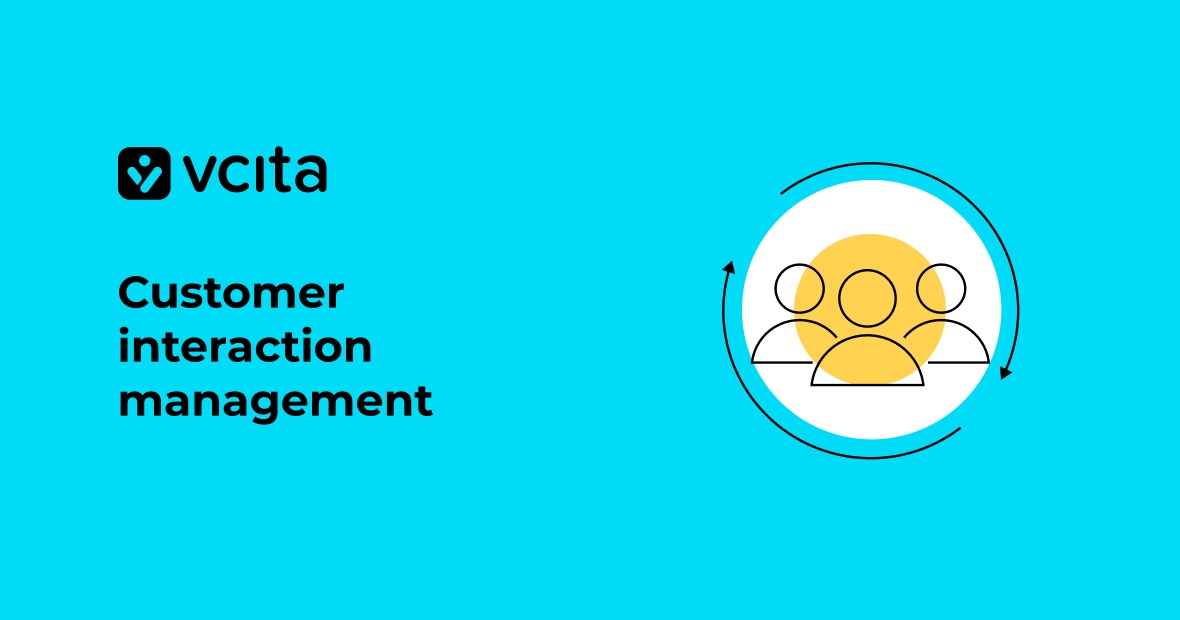You run a small business and want to keep your customers happy in today’s digital world. Creating a winning digital customer experience is key. But where do you start? How do you enhance your online presence and build deeper connections with your customers?
Don’t worry, we’ve got you covered. In this article, we’ll walk you through the essential steps to crafting a digital customer experience strategy tailored for small businesses. We’ll show you how to better understand your customers’ needs, strengthen your online brand, choose the right digital channels, and deliver personalized interactions that will turn first-time visitors into lifelong customers. Implementing these proven strategies will help you provide the seamless, engaging experience your customers expect and keep them coming back for more.
What is a digital customer experience (DCX) strategy?
A digital customer experience (DCX) strategy focuses on how people interact with your business online. For small businesses, an effective DCX strategy can help boost customer lifetime value and loyalty. Here’s what you need to know:
What a digital customer experience strategy entails
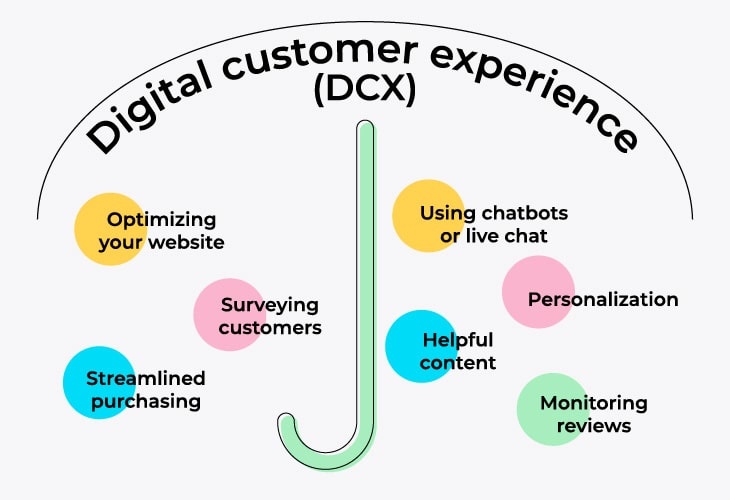
A digital customer experience strategy takes a comprehensive approach to improving the customer experience across digital channels like your website, social media, email marketing, cloud-based call center software, and any voice assistants you use. The goal is to make interactions convenient, personalized, and engaging at every digital touchpoint.
Some key elements of a digital customer experience strategy include:
- Optimizing your website for mobile devices since many customers access you that way.
- Using chatbots or live chat to assist customers quickly.
- Personalizing content and offers based on customer data and behavior.
- Streamlining the purchase process so it’s easy to buy from you.
- Providing helpful content and resources to build trust in your brand.
- Monitoring reviews and social media mentions to address any issues promptly.
- Surveying customers regularly to gain insight into their digital experience and how you can improve.
Why it matters for small businesses
For small businesses, a digital customer experience strategy can help you make a memorable impression, gain new customers through word-of-mouth and social sharing, and keep existing customers coming back. Focusing on digital experience is key since more people are shopping and engaging with brands online. A positive experience will lead to higher customer satisfaction, loyalty, and lifetime value over the long run.
A digital customer experience strategy helps ensure your small business is set up to deliver the best possible experience at every online touchpoint. When done right, it can be a key competitive advantage that fuels sustainable growth.
Current trends in digital customer experience
As a small business owner, keeping up with the latest digital customer experience (DCX) trends is key to staying ahead of the competition. Here are a few of the major trends you need to know:
Chatbots and AI

Chatbots and artificial intelligence (AI) are taking over basic customer service tasks like answering FAQs, processing returns, and handling complaints. Customers expect instant, 24/7 support causing many major companies (especially service and IT companies) to use generative ai chatbots to improve customer experience (CX). Look for ways to implement chatbot technology to boost your customer experience.
Omnichannel experience

Your customers interact with your business across many channels – your website, social media, email, phone, and in-person. Providing an omnichannel contact center means delivering a seamless experience across all these touchpoints. Make sure your messaging, branding, and services are consistent across channels. Track customer interactions to pick up conversations where you left off.
Hyper-personalization
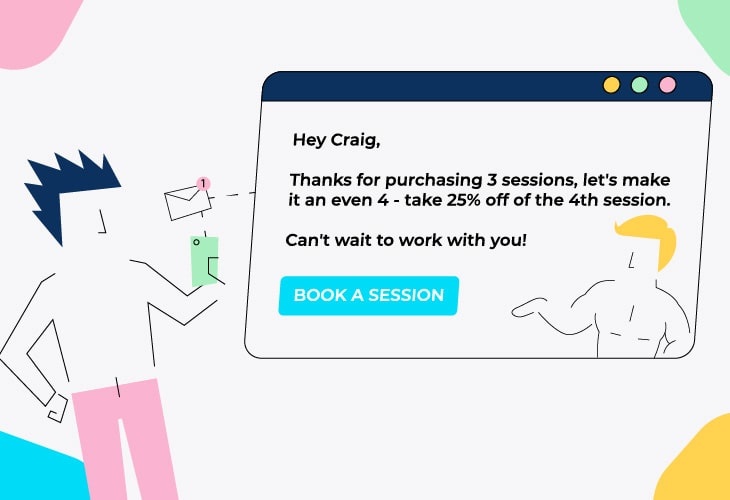
Generic one-size-fits-all experiences don’t cut it anymore. Customers expect you to know their preferences, purchase history, and problems. Leverage data and AI to provide personalized recommendations, tailored loyalty programs, and customized interactions. Show your customers you value them by personalizing their experience.
In the age of personalized digital customer experiences, understanding your customers’ preferences has never been more crucial. Incorporating zero party data directly from individuals—such as their preferences and desires—enables you to tailor experiences exactly to their needs. This not only enhances customer satisfaction but also lays a foundation for stronger, trust-based relationships with your audience.
Steps to building a digital customer experience strategy
To build an effective digital customer experience strategy for your small business, follow these key steps:
Step 1: Identify your target customers
Who are your ideal customers? Get specific about the types of people and businesses you want to attract. Think about their age, location, interests, and other characteristics. The more you know your target audience, the better you can tailor your digital experience to meet their needs.
Step 2: Determine their needs and goals
Put yourself in your customer’s shoes. What information or experience are they looking for from your business? What problems can you solve for them? Figuring out your audience’s needs, priorities, and goals will shape the kind of content and functionality you provide on your digital platforms.
Step 3: Choose your digital channels
Meet your customers where they are already spending time online. This could include your website, social media platforms like Facebook and Instagram, review sites like Yelp or Google My Business, and messaging apps. Make sure to have a consistent presence across channels so customers feel like they’re interacting with the same business.
Step 4: Create valuable content
Develop content that provides real value to your audience based on their needs and interests. This could include blog posts, videos, photos, newsletters, or resources like e-books. Share content regularly to stay engaged with your customers and give them reasons to keep coming back to your platforms.
Step 5: Collect feedback and optimize
Monitor how customers are interacting with your digital content and channels. Look at metrics like page views, click-through rates, and time spent on site. Read customer reviews and comments to gain direct feedback. See what’s working and make changes to continually improve the experience. Make updates to the design, content, and functionality to better meet customer needs over time.
Key components of an effective digital customer experience strategy
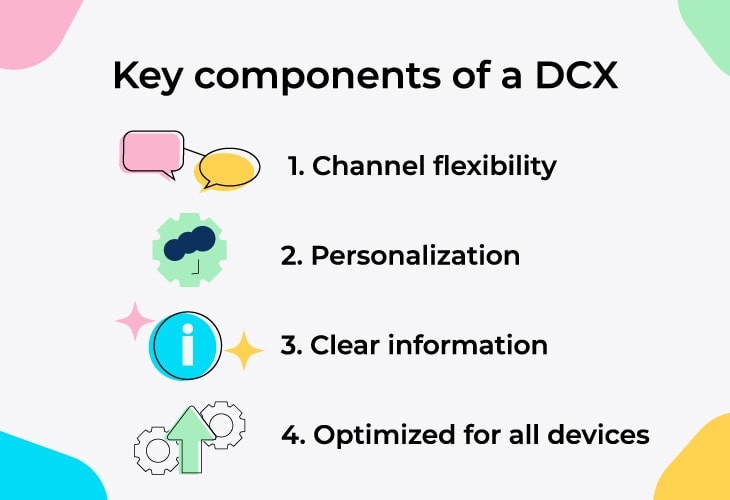
A great digital customer experience (DCX) strategy for small businesses incorporates several key components. Focusing on these elements will help ensure your customers have a seamless, personalized experience at every digital touchpoint.
Channel flexibility
Allow customers to switch between channels like your website, social media, email, chatbots, and phone without losing the context of their experience or having to repeat information. For example, if a customer contacts you on social media, make sure that information is captured and can be viewed by a customer service agent if the conversation switches to phone.
Personalization
Use customer data and insights to tailor content and offers to individual customers. For example, show product recommendations based on a customer’s browsing and purchase history. Personalization makes each customer’s experience feel customized.
Clear information
Provide customers with up-to-date, accurate information on your website, social media, and any other digital platforms to ensure a convenient experience. For example, list business hours, contact information, shipping/return policies, how-to content, and FAQs. Keep all information consistent across channels.
Optimized for all devices
With more and more customers accessing information via smartphones and tablets, your digital platforms must be optimized for viewing on any device. Content should resize and rearrange itself automatically based on the screen size. This includes your website, email campaigns, social media posts, and any other digital assets.
An effective DCX strategy with these components in place will create an experience that keeps your customers happy, loyal and coming back again and again. Be sure to continually evaluate how customers are interacting with your digital platforms and make improvements to better meet their needs. A great customer experience is never done!
Digital tools to enhance your customer’s digital experience
As a small business owner, enhancing your customer’s digital experience should be a top priority. Some of the best tools for the job include:
Customer Relationship Management (CRM) platforms
CRM platforms like vcita and allow you to manage all customer interactions and data in one place. You’ll have a 360-degree view of your customers and be able to personalize their experience.
Social listening and data analytics tools
Tools such as Locobuzz and Brandwatch monitor social media mentions of your brand and analyze consumer sentiment. You’ll gain valuable insights into your customer’s needs, opinions, and pain points so you can improve their experience.
Customer experience survey tools
Medallia, Zonka Feedback and Hotjar offer simple ways to survey your customers and get feedback on their experience with your business. Analyze the results to better understand your customers and make meaningful changes to your digital platforms.
Live chat
Live chat tools such as Drift and Intercom allow customers to message you in real time on your website. You can provide quick responses, engage new leads, and resolve issues, enhancing your customer’s experience.
Personalization engines
Platforms like Dynamic Yield and Monetate use data and AI to personalize your website for each customer. Customers will receive tailored content, offers, and product recommendations based on their interests and behavior. This highly customized experience keeps customers engaged and coming back.
Optimize your digital customer experience strategy
You’ve learned how a few simple yet impactful steps can transform your digital customer experience and help your small business thrive. Focusing on understanding your customers, streamlining the digital journey, engaging with a human touch, and optimizing continuously will set you up for success.
Don’t get overwhelmed – start with one area and build from there. Your customers will appreciate your efforts and reward you with their loyalty and business. Keep putting in the work each day to craft meaningful interactions and build real relationships. Before you know it, you’ll have created a winning digital experience that fuels the growth of your company. Now get out there, take action, and make it happen!
























